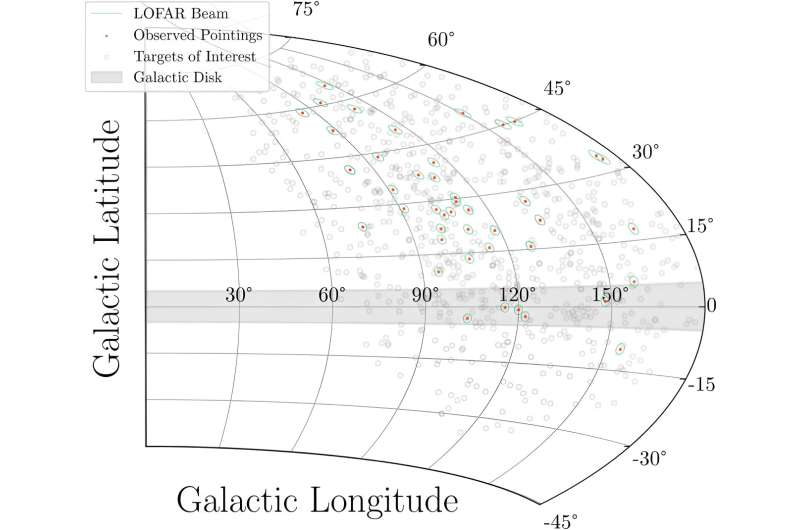This article has been reviewed according to Science X's editorial process and policies. Editors have highlighted the following attributes while ensuring the content's credibility:
fact-checked
peer-reviewed publication
trusted source
proofread
Astrophysicists scan the galaxy for signs of life

The astrophysicists, from Trinity and the Breakthrough Listen team and Onsala Space Observatory in Sweden, are scanning the universe for "technosignatures" emanating from distant planets that would provide support for the existence of intelligent, alien life.
Using the Irish LOFAR telescope and its counterpart in Onsala, Sweden, the team—led by Professor Evan Keane, Associate Professor of Radio Astronomy in Trinity's School of Physics, and Head of the Irish LOFAR Telescope—plans to monitor millions of star systems.
Scientists have been searching for extraterrestrial radio signals for well over 60 years. Many of these have been carried out using single observatories which limits the ability to identify signals from the haze of terrestrial interference on Earth. Much of the effort has focused on frequencies above 1 GHz because the single-dish telescopes employed operate at these frequencies.
Now, a new collaboration led by Trinity College Dublin, with the Breakthrough Listen team and Onsala Space Observatory in Sweden, is perfecting a multi-site, multi-telescope technique that allows them to search at much lower frequencies of 110–190 MHz.
The Breakthrough Listen program is the most comprehensive search for technologically advanced extraterrestrial life, developing dedicated instruments at the Irish and Swedish LOFAR stations. Using multiple sites has the major benefit that it is much less likely to provide a "false positive" signal; such signals arise due to interference from many human sources on Earth.
The team has just published details of their method and their ongoing search in The Astronomical Journal. They have already scanned 1.6 million star systems flagged as interesting targets by the Gaia and TESS space missions, run by ESA and NASA respectively. So far these searches have drawn a blank.
But the search has only just begun. Prof. Keane said, "In the last 50 years evidence has steadily mounted that the constituents and conditions necessary for life are relatively common in the universe, which begs one of life's greatest unanswered questions: are we really alone?"
"To some people the 'Search for Extra-terrestrial Intelligence, or SETI' might seem like something from a movie, but it has been a scientific pursuit for decades, and for a host of very good reasons."
"With this project we are basing our search on the common assumption that civilizations elsewhere in the universe may employ similar technologies to those developed on Earth. As a result radio frequencies are a logical domain for conducting SETI surveys due to the widespread use of telecommunications and radar and our access to next-gen radio telescopes offers a great chance for a deep dive into the universe."
Owen Johnson, Ph.D. Candidate in Trinity's School of Physics, is the first author of the journal article, and the first Irish person to ever undertake a Ph.D. on the topic of SETI. He added, "What makes surveys like this one truly captivating is the fact that we're pushing these telescopes to their absolute limits, directing them towards substantial portions of the sky. As a result, we have the exciting possibility of discovering all sorts of wild and wondrous phenomena during this process and if we're very fortunate, even encountering our cosmic neighbors."
"LOFAR is soon to undergo a staged series of upgrades across all stations in the array across Europe, which will allow an even broader SETI at ranges of 15–240 MHz. We have billions of star systems to explore and will be relying on some machine learning techniques to sift through the immense volume of data."
More information: Owen A. Johnson et al, A Simultaneous Dual-site Technosignature Search Using International LOFAR Stations, The Astronomical Journal (2023). DOI: 10.3847/1538-3881/acf9f5
Journal information: Astronomical Journal
Provided by Trinity College Dublin




















